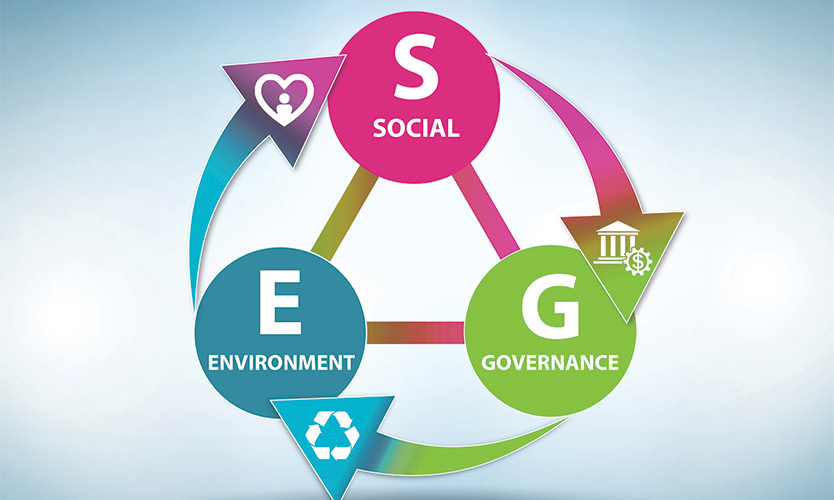
Introduction
As the global climate continues to change, the need for innovative solutions to tackle this pressing issue becomes more important than ever. One such solution is environmental insurance, which plays a crucial role in mitigating the risks associated with climate change.
What is climate change?
Climate change refers to long-term shifts in weather patterns and average temperatures on Earth. It is primarily caused by human activities, such as the burning of fossil fuels, deforestation, and industrial processes. The consequences of climate change include rising sea levels, extreme weather events, and the loss of biodiversity.
Importance of tackling climate change
Tackling climate change is paramount for several reasons. First and foremost, it is vital for the survival and well-being of future generations. Additionally, addressing climate change helps protect vulnerable ecosystems, reduces the risk of natural disasters, and promotes sustainable economic development.
Role of environmental insurance
Environmental insurance plays a vital role in addressing the risks associated with climate change. It provides coverage for businesses and organizations against environmental liabilities, such as pollution, contamination, and ecological damage. By transferring the financial risk to insurance providers, environmental insurance encourages businesses to adopt environmentally-friendly practices and invest in sustainable technologies.
In conclusion, tackling climate change requires a multifaceted approach, and environmental insurance is an essential tool in this effort. By incentivizing responsible environmental practices and offering financial protection, environmental insurance helps create a more sustainable and resilient future.
Understanding Environmental Insurance
Definition and purpose of environmental insurance
Environmental insurance is a type of coverage that provides financial protection against risks and liabilities associated with pollution and environmental damage. This insurance is designed to help businesses manage the costs related to cleanup and remediation, as well as legal expenses and third-party claims arising from environmental incidents.
Key coverage areas
Environmental insurance typically covers a range of areas, including:
- Pollution liability: This includes coverage for costs related to pollution incidents, such as cleanup expenses, legal fees, and damages to third parties.
- Remediation costs: Environmental insurance can help cover the expenses of cleaning up and restoring contaminated sites, including soil and water remediation.
- Business interruption: If an environmental incident disrupts your business operations, this coverage can provide compensation for lost income and extra expenses incurred during the interruption.
Benefits of environmental insurance
Investing in environmental insurance offers several benefits for businesses, including:
- Financial protection: Environmental incidents can be costly, and having insurance coverage can help mitigate these expenses, protecting your business’s financial stability.
- Compliance with regulations: Many industries are subject to environmental regulations, and having environmental insurance can help demonstrate compliance, mitigating potential fines and penalties.
- Peace of mind: Knowing that you have insurance coverage in place can provide peace of mind, allowing you to focus on your business operations without worrying about the financial consequences of environmental incidents.
In conclusion, environmental insurance provides businesses with essential protection against the risks and liabilities associated with pollution and environmental damage. It helps manage the costs of cleanup and remediation, legal expenses, and third-party claims. The coverage areas include pollution liability, remediation costs, and business interruption. Investing in environmental insurance offers financial protection, regulatory compliance, and peace of mind for businesses.
Addressing Climate Change Risks with Environmental Insurance
Climate change poses significant challenges to businesses and communities worldwide. To effectively tackle these risks, the role of environmental insurance cannot be overlooked.
Assessing and managing climate change-related risks
As the frequency and severity of extreme weather events increase, businesses face a range of climate change-related risks, including property damage, supply chain disruption, and liability claims. Assessing and managing these risks is crucial to ensure business continuity and long-term sustainability.
Role of environmental insurance in risk mitigation
Environmental insurance provides financial protection and risk transfer solutions for climate change-related risks. It covers costs associated with pollution cleanup, legal expenses, property damage, and business interruption. By having an environmental insurance policy, businesses can mitigate potential losses and ensure they have the necessary financial resources to recover from climate-related events.
Case studies of successful climate change risk management with environmental insurance
Several case studies highlight the effectiveness of environmental insurance in managing climate change risks. For example, a manufacturing company experiencing a flood-related equipment breakdown was able to quickly resume operations and recover financially due to their environmental insurance policy.
By adopting proactive risk management strategies and partnering with insurers that specialize in environmental coverage, businesses can better protect themselves from climate change-related risks and ensure a more sustainable future.
(Note: This article is for informational purposes only and does not constitute insurance advice. Businesses should consult with insurance professionals to determine the most appropriate coverage for their specific needs.)
Types of Environmental Insurance Policies
Pollution Liability Insurance
For businesses that are involved in activities that have the potential to cause pollution, pollution liability insurance is crucial. This type of insurance provides coverage for damages and legal costs associated with pollution incidents. It helps businesses protect themselves from the financial consequences that result from accidental releases of pollutants into the environment.
Environmental Impairment Liability Insurance
Environmental impairment liability insurance is designed for businesses that handle hazardous substances. It provides coverage for legal liabilities and costs related to pollution that causes damage to natural resources, including land, water, and wildlife. This type of insurance is especially important for industries such as manufacturing, transportation, and waste management.
Climate Change or Greenhouse Gas Liability Insurance
As the impacts of climate change become more apparent, businesses are increasingly concerned about their liability for contributing to greenhouse gas emissions. Climate change liability insurance helps businesses protect themselves from legal claims related to their carbon footprint and the negative effects of climate change.
Renewable Energy Insurance
With the growing focus on renewable energy sources, businesses involved in renewable energy projects need insurance coverage tailored to their unique risks. Renewable energy insurance provides protection for property damage, business interruption, and liability associated with renewable energy installations, such as solar farms and wind turbines.
These types of environmental insurance policies are essential for businesses to mitigate risks and protect themselves from potential liabilities associated with climate change and environmental damage. By obtaining the appropriate insurance coverage, businesses can demonstrate their commitment to sustainability and environmental responsibility while safeguarding their financial interests.

Challenges and Opportunities in Environmental Insurance
Challenges faced by insurers in providing environmental coverage
Insurers face several challenges when it comes to providing environmental coverage. The unique nature of environmental risks, such as pollution and climate change, makes it difficult to accurately assess and quantify the potential liabilities. Additionally, the long-tail nature of environmental claims and the lack of historical data further complicate the underwriting process. Insurers also face challenges in determining the appropriate policy limits and pricing the coverage to remain profitable.
Innovations in environmental insurance products
To address the challenges in environmental insurance, insurers have been innovating their products. They are developing specialized policies that offer coverage for various environmental risks, including pollution liability, natural resource damages, and clean-up costs. These policies often include enhanced risk assessment tools and provide coverage for emerging risks like cyber liability and environmental damage caused by extreme weather events. Some insurers have also introduced parametric insurance solutions that provide coverage based on predefined triggers like pollution levels or climate change events.
Collaborative efforts to enhance environmental insurance effectiveness
Insurers, policymakers, and industry stakeholders are collaborating to enhance the effectiveness of environmental insurance. They are working together to establish standardized risk assessment methodologies, data sharing platforms, and risk mitigation measures. By sharing data and best practices, insurers aim to improve underwriting accuracy and develop more comprehensive coverage options. Collaboration with regulators and policymakers is also crucial to ensure that the insurance industry is aligned with environmental regulations and supports sustainable practices.
Overall, the challenges in providing environmental insurance are being met with innovative solutions and collaborative efforts, creating opportunities for insurers to play a vital role in addressing climate change and environmental risks.
The Future of Environmental Insurance in Tackling Climate Change
As climate change continues to pose significant challenges worldwide, the importance of finding innovative solutions has become increasingly urgent. One potential solution that has gained attention is the use of environmental insurance.
Emerging trends and technologies in environmental insurance
Insurance providers are adapting to the changing landscape by developing new products and policies that address environmental risks. This includes coverage for natural disasters, pollution liability, and climate-related damages. Additionally, advancements in technology, such as remote sensing and data analytics, are enabling insurers to better assess and quantify environmental risks.
Potential for scaling up environmental insurance solutions
There is great potential for scaling up the adoption of environmental insurance in both the public and private sectors. By offering financial protection against climate-related damages, environmental insurance can incentivize businesses and individuals to adopt more environmentally friendly practices. This can ultimately lead to a reduction in greenhouse gas emissions and promote sustainable development.
Policy recommendations for promoting environmental insurance adoption
To promote the adoption of environmental insurance, policymakers should consider implementing the following strategies:
- Provide incentives: Governments can offer tax incentives or grants to businesses that invest in environmental insurance and adopt sustainable practices.
- Enhance awareness and education: Increase public awareness about the benefits of environmental insurance through educational campaigns and workshops.
- Encourage collaboration: Foster partnerships between insurance companies, environmental organizations, and governments to develop comprehensive solutions that address climate change risks.
In conclusion, environmental insurance offers a promising pathway towards tackling climate change. By leveraging emerging trends and technologies, scaling up adoption, and implementing supportive policies, we can build a more sustainable future for generations to come.
Recap of the importance of environmental insurance in addressing climate change
Environmental insurance plays a crucial role in addressing the challenges of climate change. By providing financial protection and liability coverage, it helps businesses mitigate the risks associated with environmental damage and pollution. This type of insurance encourages companies to implement sustainable practices and invest in eco-friendly technologies. It also incentivizes proactive measures to prevent and manage environmental incidents. Ultimately, environmental insurance contributes to the collective effort of reducing greenhouse gas emissions and promoting a greener and more sustainable future for all


